Contents:
Not all coins were meant to be liked. Some of them, however peculiar their features might seem, have long gone unnoticed in circulation, only to be recognized years later for their hidden value. The 1966 Lincoln penny is one of those disregarded units of currency that nonetheless got accepted by the numismatic community in recent years.
It is vital to remember that carefully stored coins may grow in value over time, yet such a fate cannot be predicted with certainty, as rarity, demand, and condition all play erratic roles. So, what does a 1966 penny look like? Which features identify this coin as rare? And how much does it cost in 2025? Let us see.
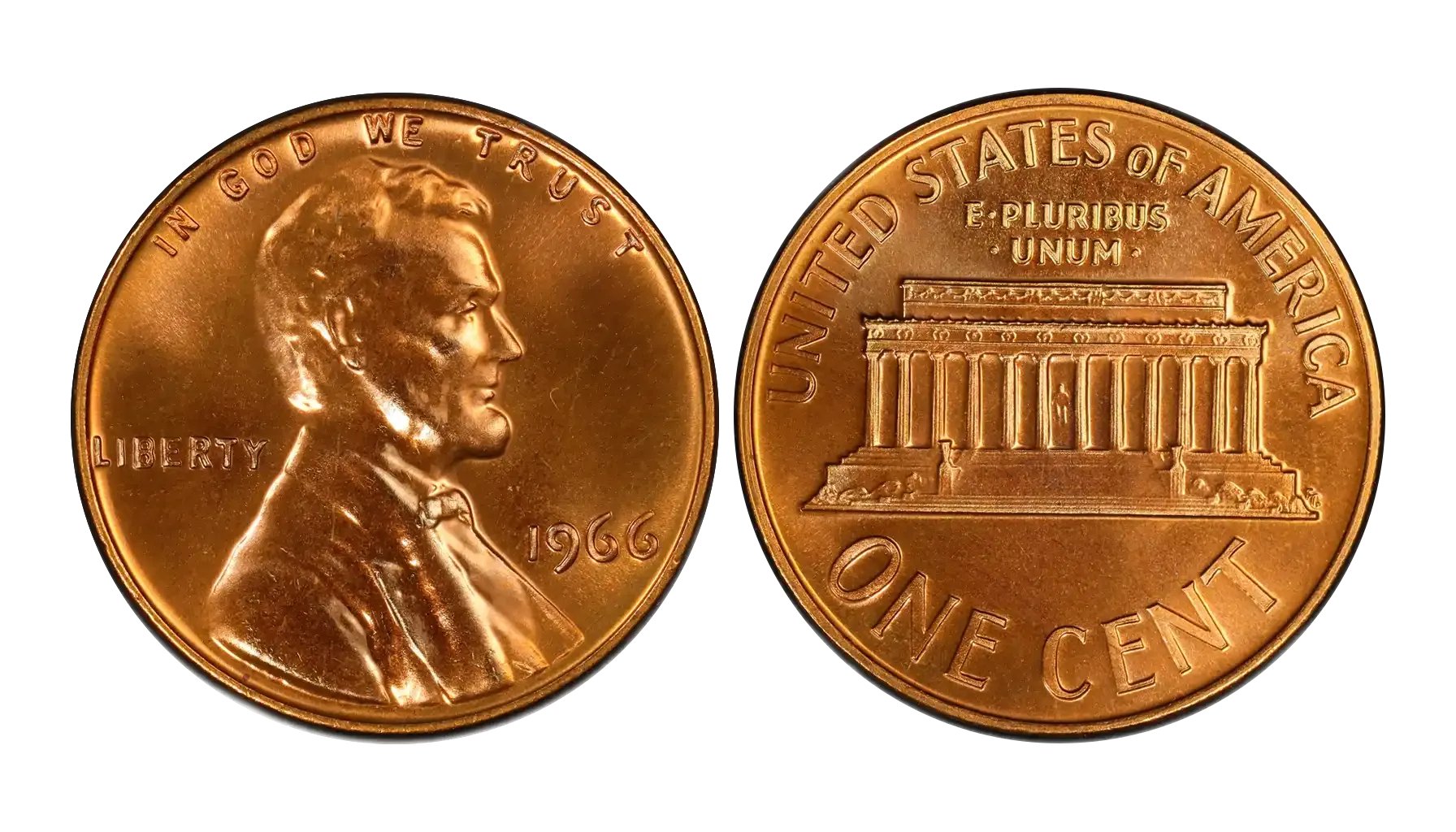
Briefly About Penny’s History
The history of a simple penny is as diverse as the American monetary system itself. The one-cent coin was first issued in 1787 with the introduction of the Fugio cent, though its official birth date is usually marked in 1792, i.e., the year when the US Mint was established.
Although the appearance of a 1C coin saw various iterations, including Flowing Hair Chain, Flowing Hair Wreath, Draped Bust, Classic Head, Flying Eagle cent, Indian Head Cent, and even more, the most popular and recognizable one is still the design issued as a commemoration of the centennial of Lincoln's birth. The 1909 VDB penny became the first regular-issue coin to feature a real historical figure and one of the most controversial coins ever struck in the US.
Over the years, the Lincoln penny underwent several design changes on its reverse side. At first, it was the coin with two wheat ears on the back until 1958, when it was replaced by the Lincoln Memorial to honor the 150th anniversary of Lincoln's birth. Since 2010, the US Mint has issued only Shield cents with the updated appearance, i.e., a union shield design which refers to Lincoln’s preservation of the United States as a single, unified nation.
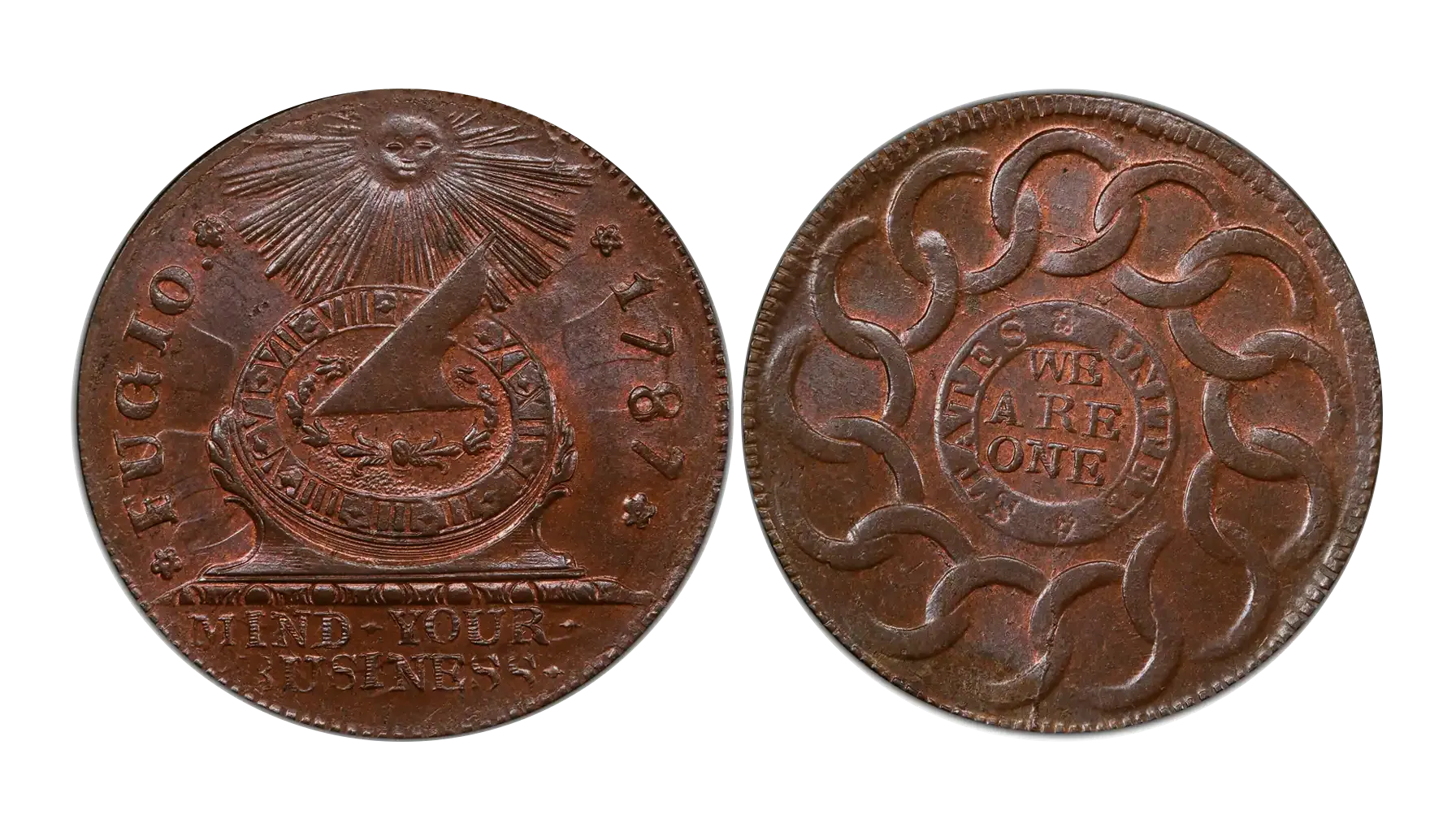
The Main Features of the 1966 Lincoln Cent
Obverse: The obverse (front) features a right-facing portrait of President Abraham Lincoln, designed by Victor David Brenner, as well as the inscriptions "IN GOD WE TRUST" along the upper rim, "LIBERTY" to the left of Lincoln's profile, and the date "1966" located to the right.
Reverse: The reverse (back) side displays the Lincoln Memorial, designed by Frank Gasparro, with a tiny seated Lincoln statue between the columns and the inscriptions "UNITED STATES OF AMERICA" along the top edge, "E PLURIBUS UNUM" centered above the Lincoln Memorial, and "ONE CENT" positioned below.
Specifications of the 1966 Cent | |
Composition | 95% copper, 5% zinc |
Weight | 3.11 grams |
Diameter | 19.05 mm (0.75 inches) |
Thickness | 1.52 mm |
Edge | Plain (smooth, no reeding) |
Mint Marks | None |
Mint Location | Philadelphia and San Francisco |
Series | Lincoln Memorial Cent (1959–2008) |
Types by Strike
1966 1C
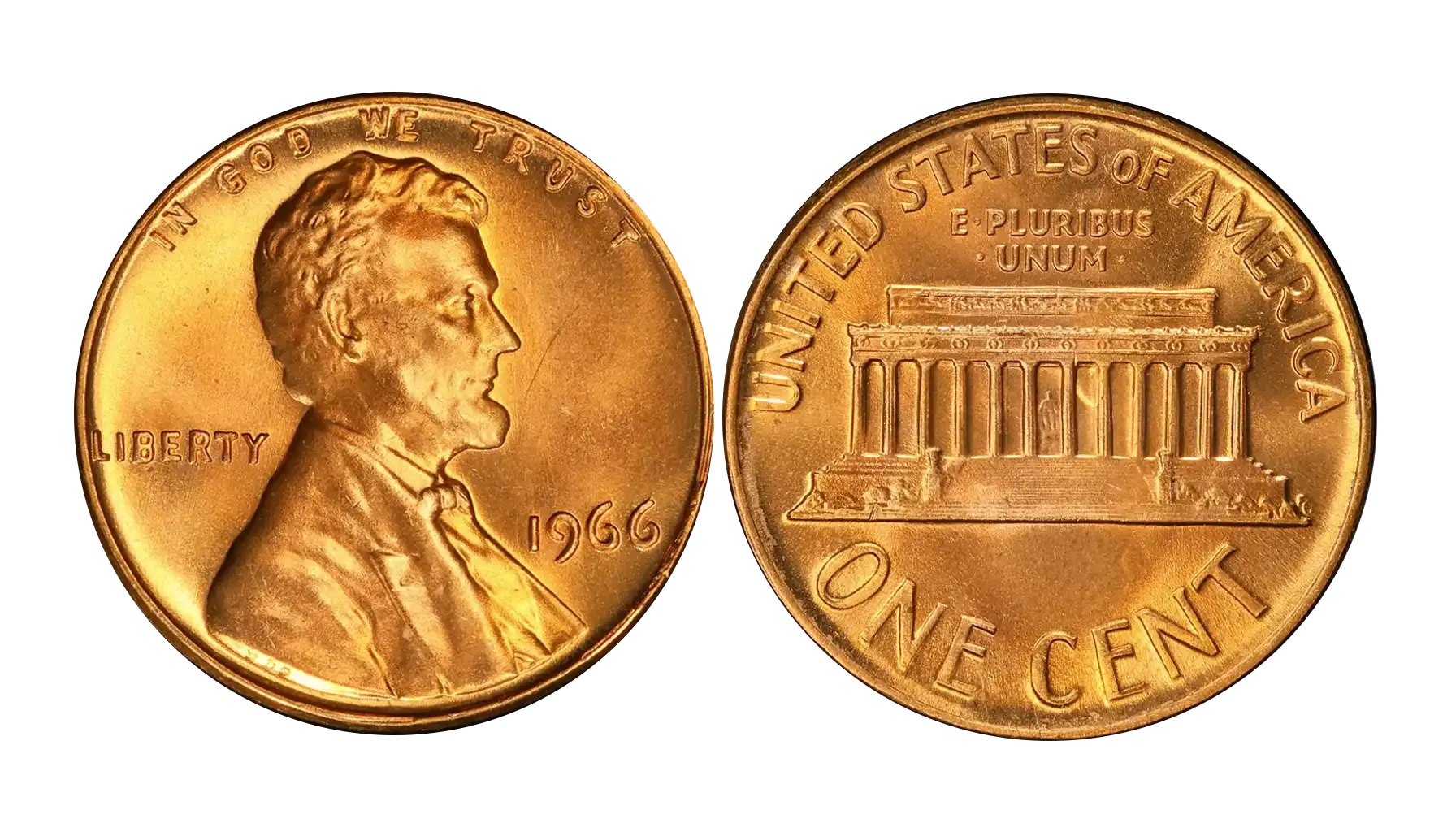
Produced by: Philadelphia Mint
Mintage: 2,188,147,783
Auction Record: $6,463 for MS67RD
The story about this numismatic creation is rather peculiar. This regular-issue business strike coin was minted during a transitional period when mint marks were temporarily suspended to discourage hoarding. As a result, all 1966 cents lack a mint mark, even though most were produced by the Philadelphia Mint. This is why these are generally referred to as "1966 penny with no mint mark".
Their values, anyway, rise significantly, depending on their color designations, which include:
BN (Brown): Common, lowest value; less than 5% original red luster
RB (Red-Brown): Intermediate; 5% to 95% original red luster
RD (Red): Most desirable and valuable; at least 95% original red luster
1966 1C SMS
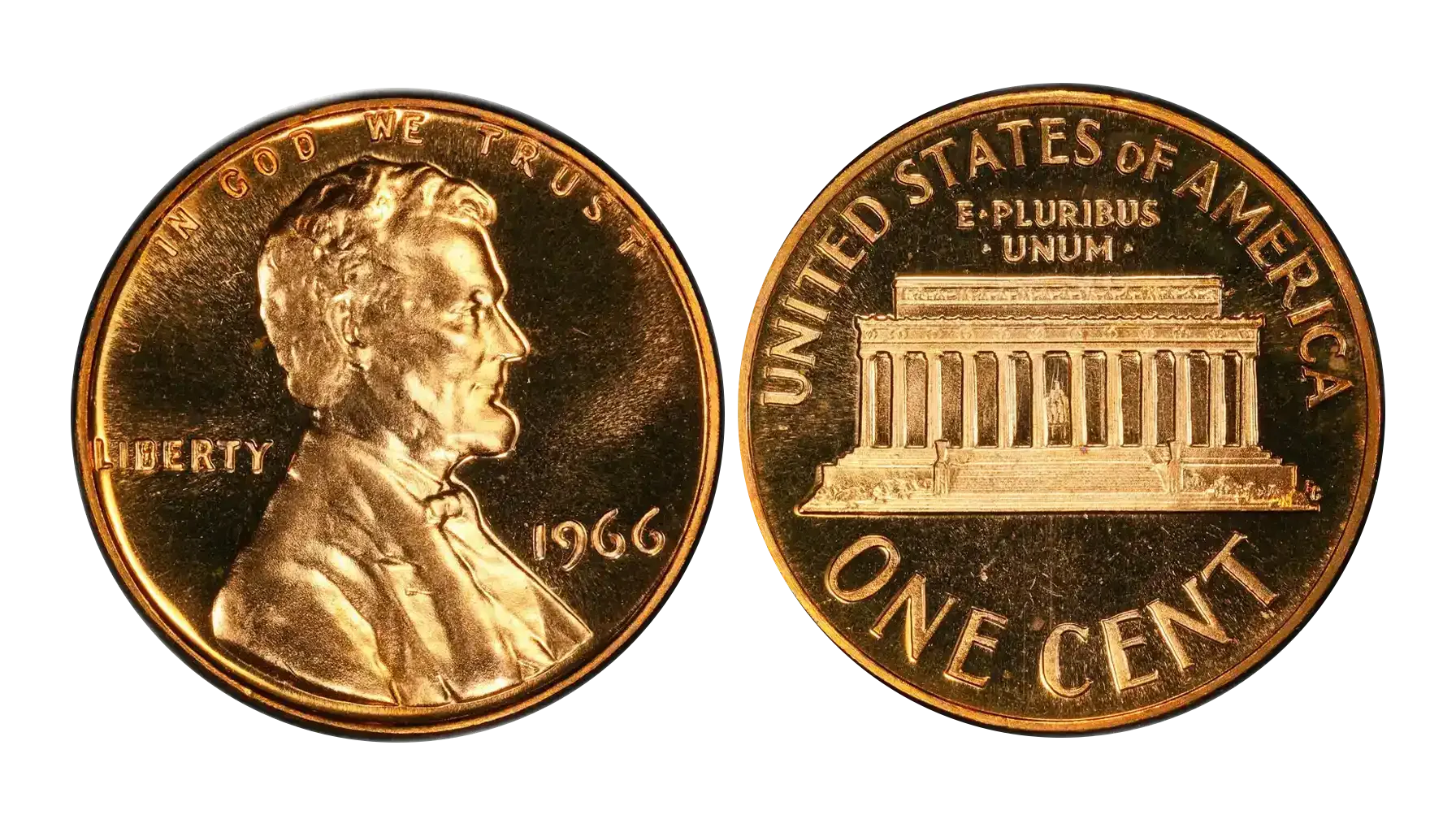
Produced by: San Francisco Mint
Mintage: 2,261,583
Auction Record: $2,585 for SP67
The second and only issue that was meant to be collected by numismatists refers to the 1966 Special Mint Set (SMS), produced instead of traditional proof sets during the mid-1960s. Obviously enough, these were never intended for circulation, for they feature more exquisite, satin-like finish and more exceptional strike quality overall.
In addition to the regular BN, RB, and RD, these coins may exhibit Cameo (CAM) or Deep Cameo (DCAM) designations that are mainly characterized by a more pronounced level of contrast between frosted devices and mirrored fields. This is what draws the collectors and makes these pieces unique.
Circulated vs. Uncirculated Value
Before considering the appropriate 1966 penny value, it is vital to take a look at the theory: the differences between circulated and uncirculated coins. At the end of the day, it is the most controversial yet definitive aspect of how the worth of the piece is composed. The condition, or grade, plays a central role, and it is the key factor in that assessment.
Circulated Coins
Circulated coins are those that have been used in daily transactions. Over time, they accumulate wear from handling, contact with other coins, and exposure to environmental conditions. This wear can dull the surface, reduce the sharpness of its details, and cause discoloration. While circulated coins, in general, can still be collectible (e.g., the 1794 Flowing Hair silver dollar), it is a rare occasion that cannot be compared to that of their uncirculated counterparts.
NB: Circulated units are graded on a scale from Poor (P-1) to About Uncirculated (AU-58), depending on how much detail remains and how heavily worn the coin is.
Uncirculated Coins
Finally, here come the coins that have never entered general circulation or have been carefully handled so that they could preserve their pristine condition as it was. As a rule, they retain their original mint luster, sharp detail, and clean surfaces, which makes their value higher and the hunt more intense.
NB: Uncirculated pieces are graded on the Mint State (MS) scale, which ranges from MS60 to MS70. Even small differences in grade within this range (for example, MS65 vs. MS67) can lead to major discrepancies in value either way.
Valuable & Rare 1966 Penny Error List
Doubled Die Reverse (DDR)
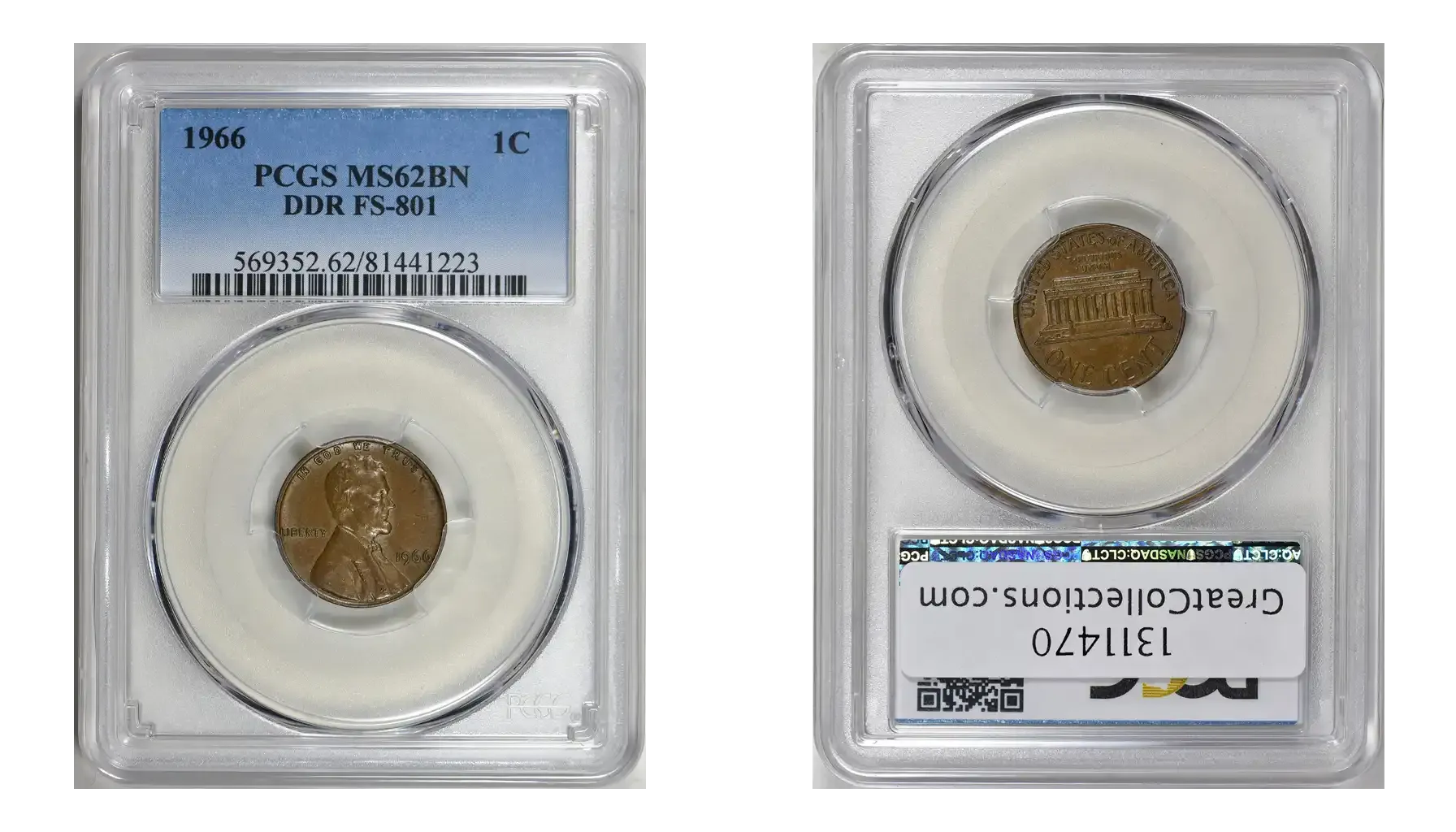
Estimated Value: $3,700
This deviation is characterized by a noticeable doubling on reverse elements such as the lettering in “E PLURIBUS UNUM” and "UNITED STATES OF AMERICA". Indeed, this can be either subtle or dramatic, and the 1966 no mint mark penny value depends on how visible it is to the naked eye.
Misplaced "L" on Rim
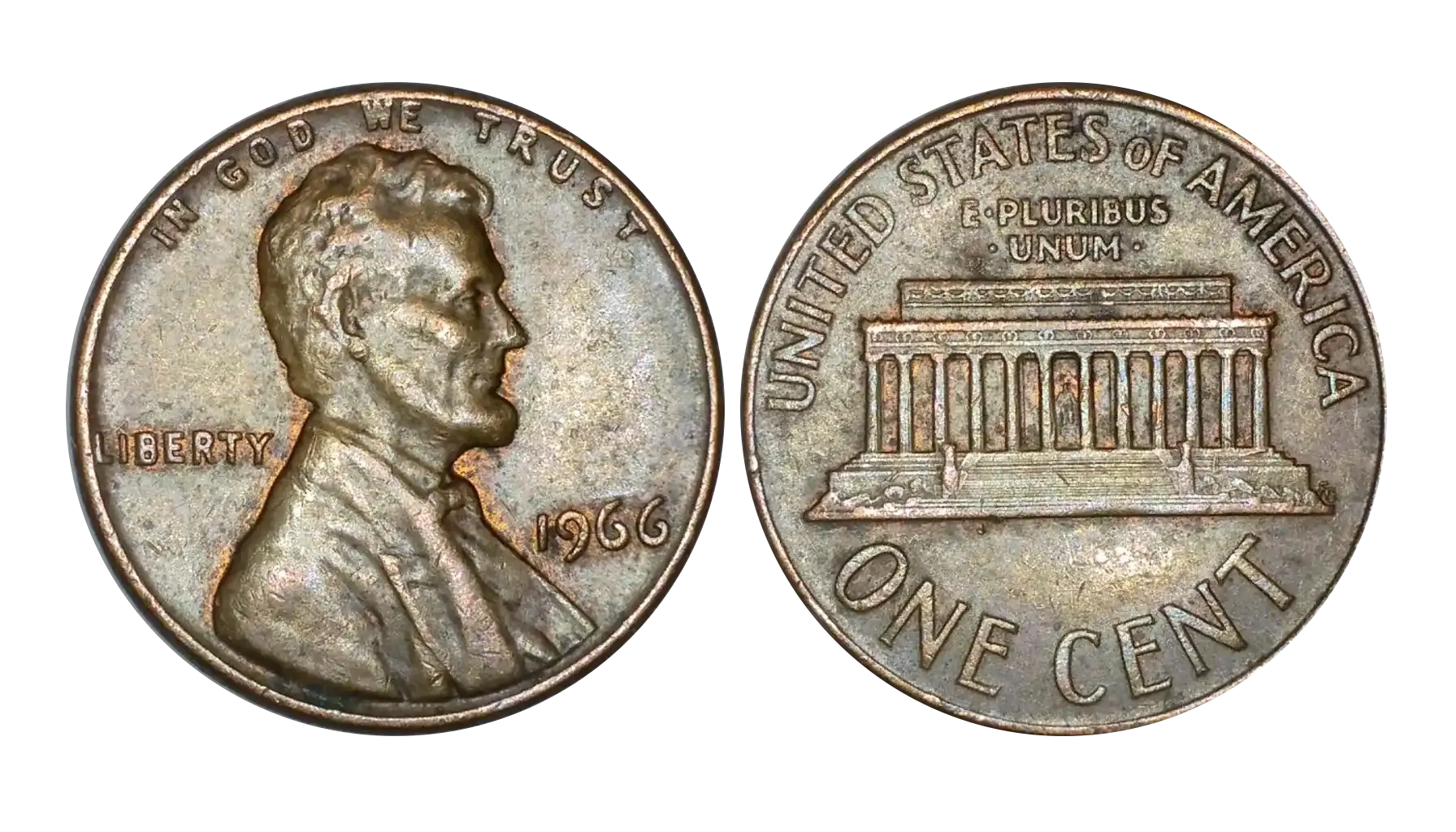
Estimated Value: $1,500
Some anomalies occur when any letter, e.g., the "L", from "LIBERTY" is struck too far, partially landing on the coin's rim. These misalignments are highly collectible due to their visual uniqueness and rare encounters when circulated.
Doubled Die Obverse (DDO)
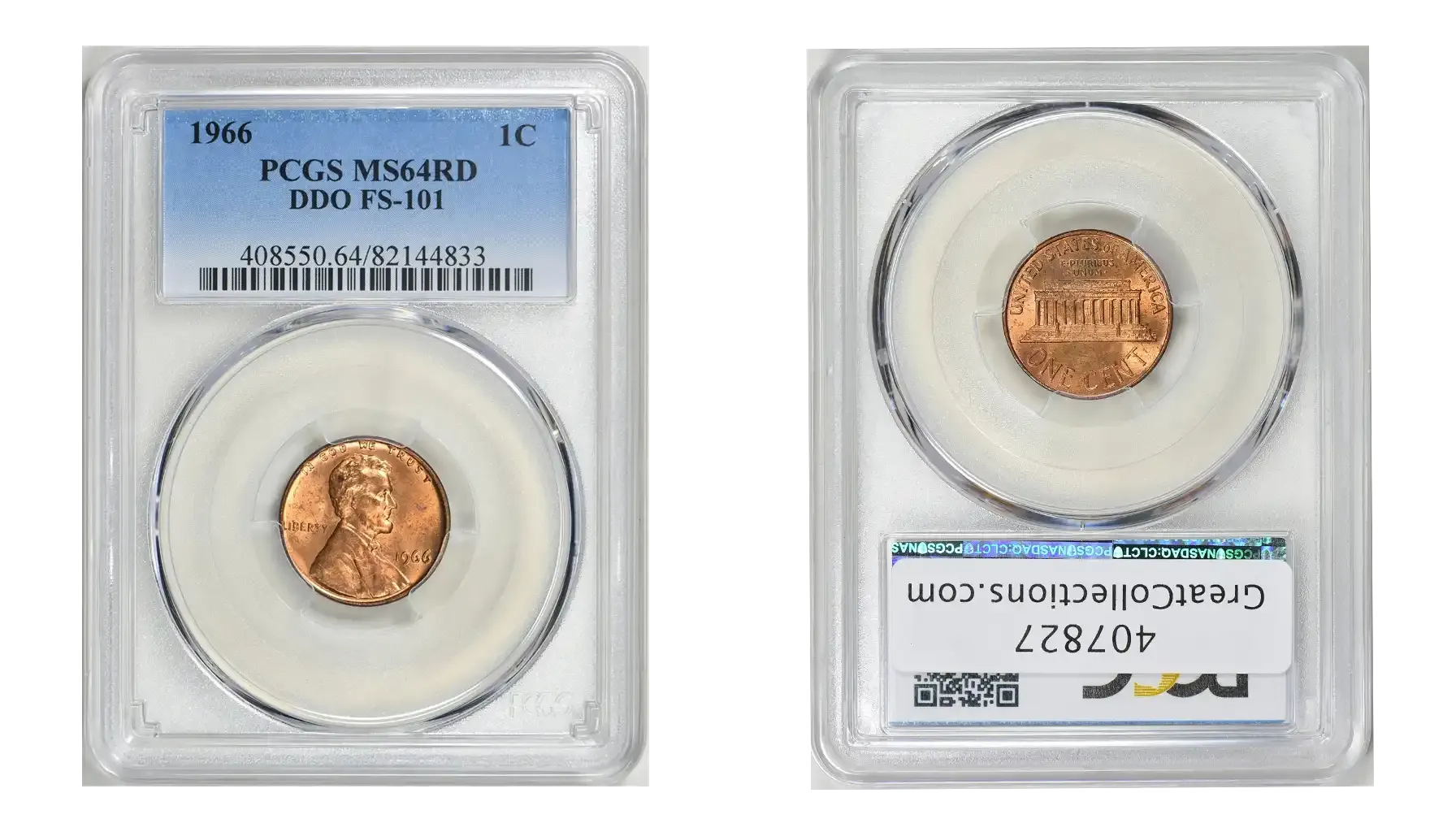
Estimated Value: $800
According to the renowned coin auction platform, the GreatCollections, there might be found a doubling on the obverse inscriptions such as "LIBERTY" and "IN GOD WE TRUST". Though less dramatic than some DDR examples, it is still a significant find for those who strive to obtain a 1966 double die penny.
Lamination Error
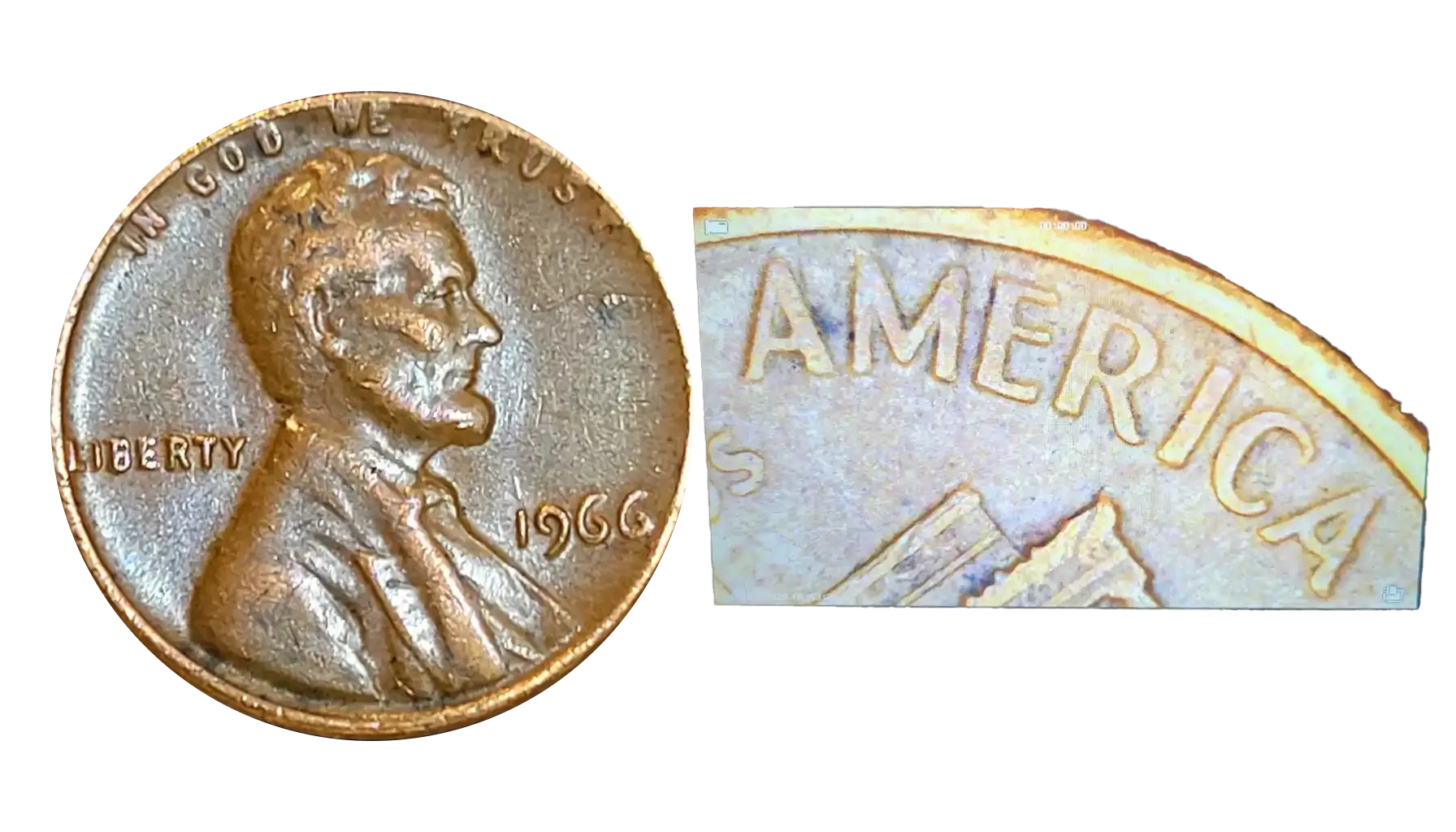
Estimated Value: $660
At times, numismatists may stumble upon pieces of lamination errors, i.e., deviations when a portion of the metal peels due to impurities or defects in the initial planchet used. As a result, one may see rough, cracked, or missing surface areas that boost the value for good.
Clipped Planchet
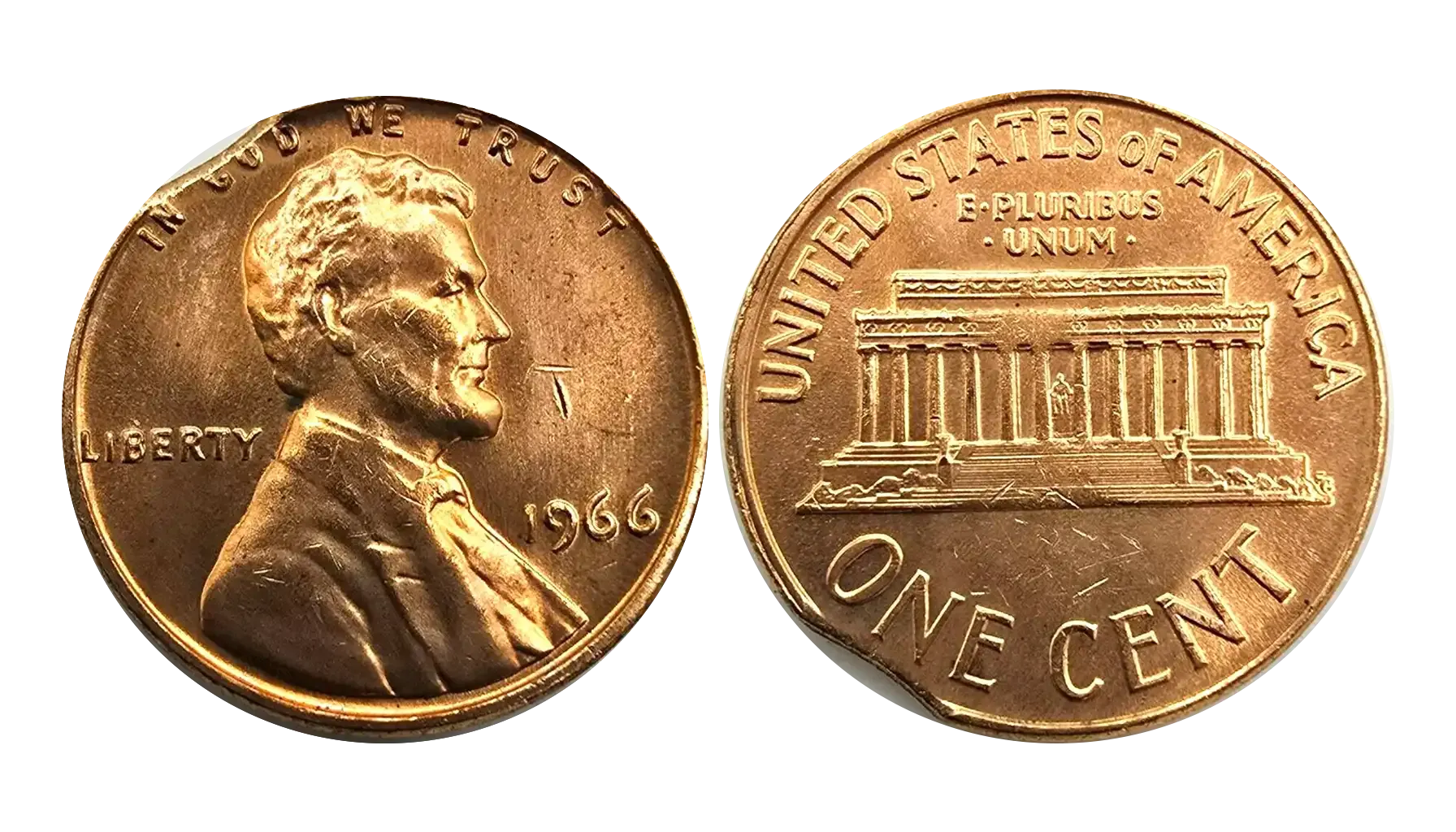
Estimated Value: $600
The last in the list does not mean the least valuable. Although clipped planchet errors may seem insignificant, their prices may exceed hundreds of dollars per piece. From the technical perspective, this deviation happens when a section of the blank planchet is improperly cut, which results in a curved or straight "clip" on the edge.
Related article: Top Double Die Pennies: Identify, Value, and Collect Rare Errors
How Much Is a 1966 No Mint Penny Worth?
As we have covered before, there are two primary types of this coin, i.e., the regular business strike and the Special Mint Set (SMS) version. In general, they do cost 1 cent only, yet certain examples with special attributes or stories behind can be sold for dozens or hundreds of dollars on the market.
Grade | Regular Strike | SMS Piece |
Good (G-4) | $0.01 | — |
Fine (F-12) | $0.02 | — |
Ext. Fine (XF-40) | $0.05 | — |
About Unc. (AU-50) | $0.10 | — |
MS60 | $0.25 | $1–$2 |
MS63 | $0.50 | $3–$5 |
MS65 / SP65 | $5–$12 | $8–$15 |
MS66 / SP66 | $20–$50 | $20–$40 |
MS67 / SP67+ | $150–$300+ | $100–$250+ |
Note: Prices can vary depending on color designation (BN, RB, RD) and, for SMS coins, the presence of Cameo (CAM) or Deep Cameo (DCAM) finishes.
Should You Get It Graded?
Coin grading is an important step in determining a coin’s true market worth. But is it reasonable in some cases? Let us check.
When Is It Worth Getting a Coin Graded?
Professional grading makes sense if:
It appears to be in Mint State (MS65 or higher), with full red (RD) luster.
You suspect it might be a rare variety or error, like those mentioned above.
It is an SMS item with exceptional eye appeal, especially if it might boast Cameo (CAM) or Deep Cameo (DCAM) designation.
You plan to sell the coin and want to maximize its value. Certificates do affect the way collectibles sell.
Not Sure If Your Collection Is Worth Grading? Use Coin ID Scanner!
Before sending your coin to a reputable grading service like NGC or PCGS, let our app work for you!
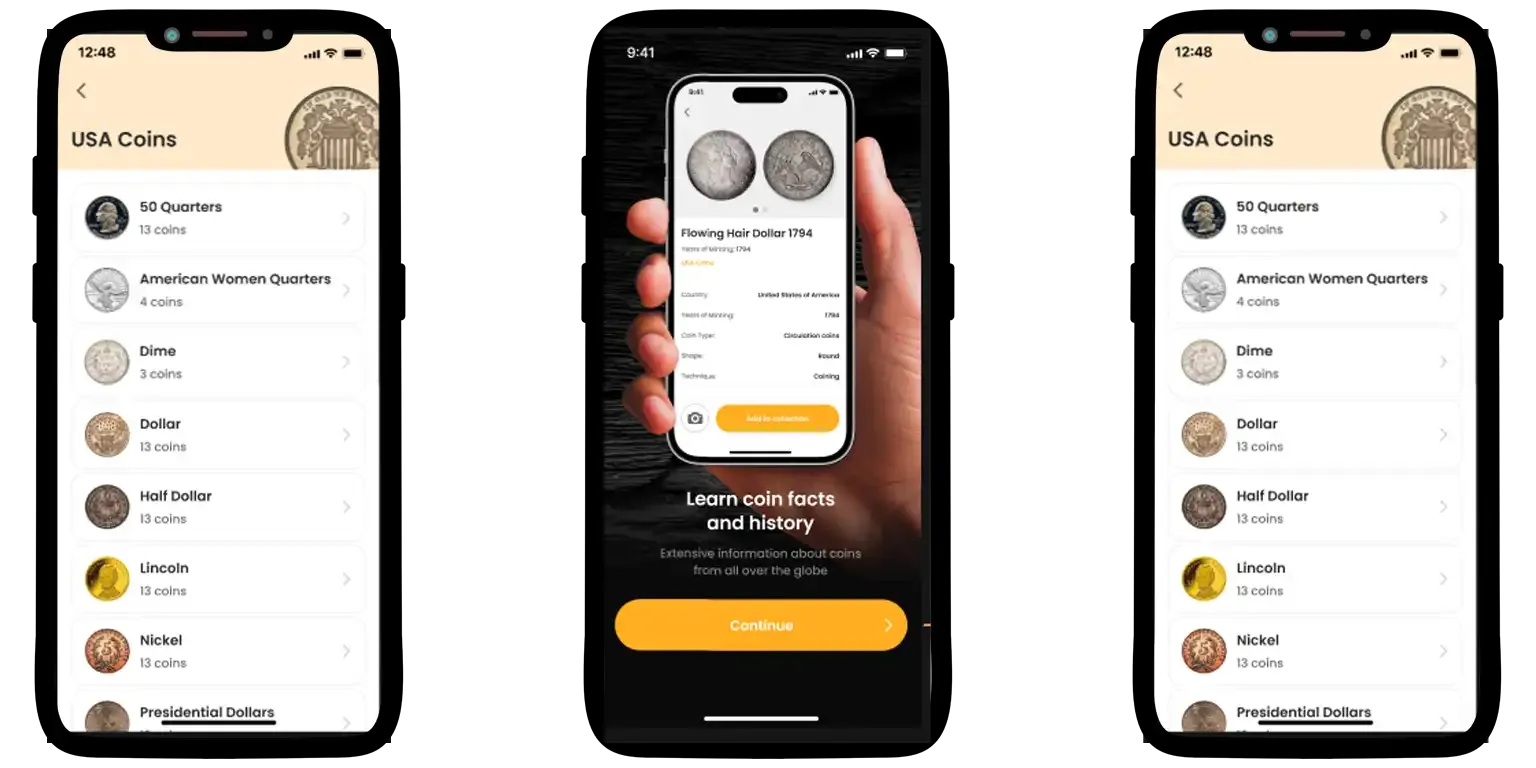
With Coin ID Scanner, you can:
Identify numismatic instances by photo: Snap or upload a picture and instantly access the main details like year, country, type, edge, composition, weight, market trends, and even more.
Manage your collection: Build and organize your personal digital collection right in the app.
Search our extensive database: Explore over 187,000 pieces from all over the world with smart filters and manual or photo-based search.
Get instant help with AI Coin Helper: Ask questions and get related answers anytime.
Every coin has a past, but not each one is stored properly. Look for treasures: they might be hidden right in front of you.
